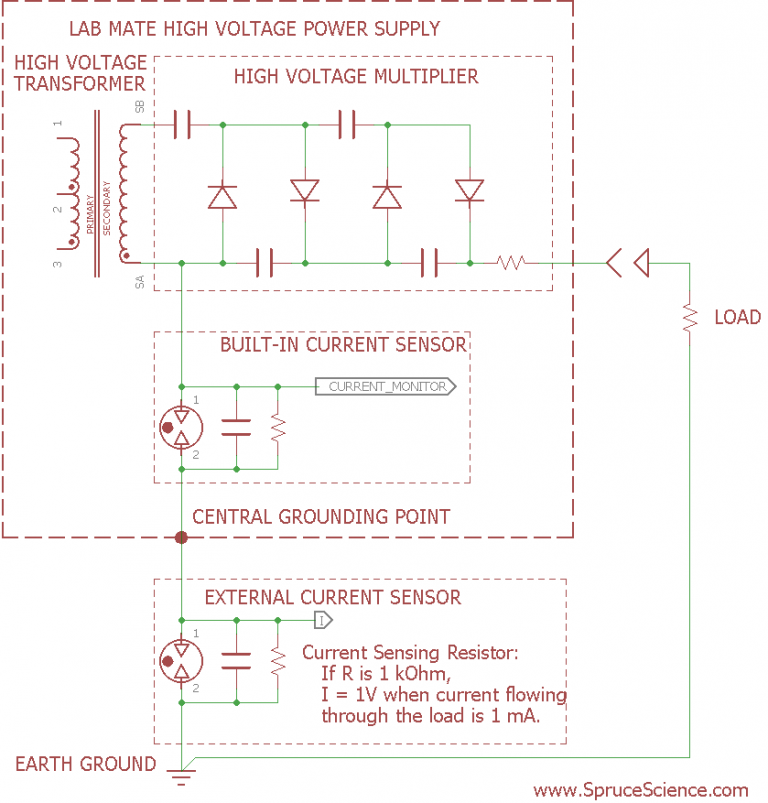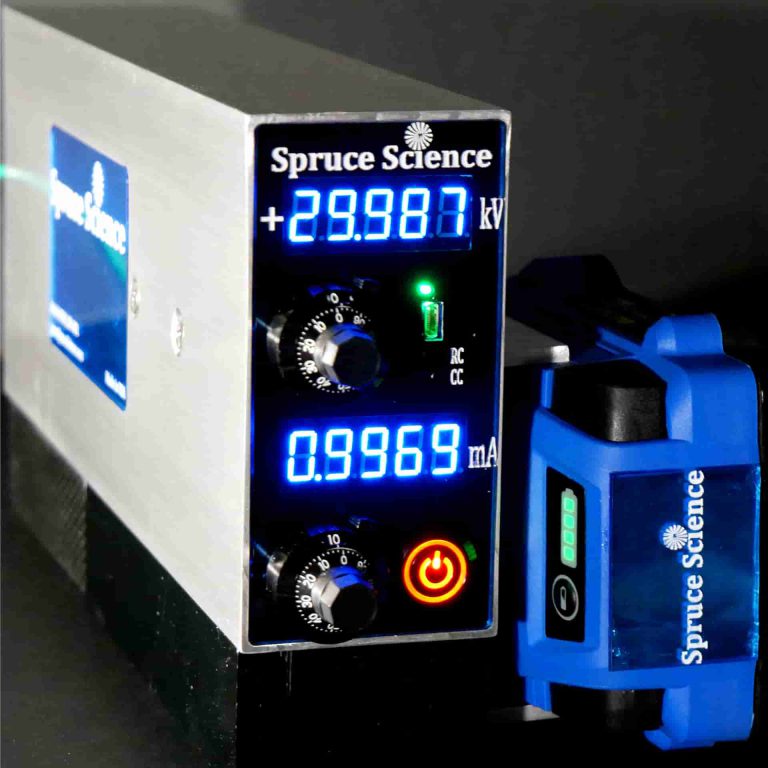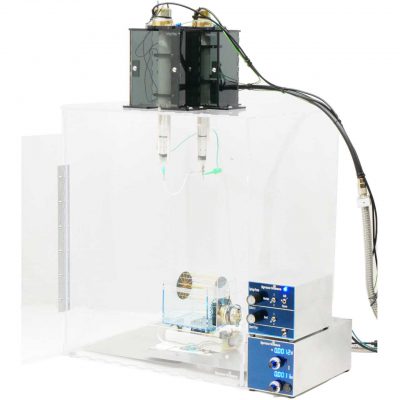Current Measurement in High Voltage Systems
Introduction
The Lab Mate high voltage power supply can be operated in either constant voltage mode or constant current mode. These modes control the output of the power supply. In constant voltage mode, the power supply maintains a constant output voltage set by the operator, while the current drawn by the load varies. This is the most common mode of operation for this type of power supply. In constant current mode, the power supply maintains a constant output current set by the operator, while the voltage output varies as required by the load. Both modes use a feedback circuit to continuously regulate the output and automatically switch between modes as needed. The power supply also enters constant current mode when faults such as overload, arcing, and short circuit occur to provide protection.
The Lab Mate high voltage power supply’s current flow is a loop that begins with the high voltage multiplier. The current flows out from the multiplier, into the load, and then returns back to the power supply’s high voltage output section. The return path for the current is critical as it must be grounded to ensure the safe and efficient flow of the current back to its original source.
As explained in the high voltage power supply grounding page, the Lab Mate high voltage power supply has been designed with a “star” grounding technique to establish the grounding for the input power source, the programming input signals, the analog control signals, and the high voltage return. By providing each ground with its own independent, dedicated current return path, this technique helps to ensure accuracy and stability by preventing fluctuations.
Built-in Current Sensor
The built-in current sensor in the Lab Mate high voltage power supply is an important component that plays a crucial role in monitoring and regulating the current flow. It can be seen in the schematic of the high voltage power supply. The sensor measures the current flowing through the current sensing resistor, which is placed between the ground leg of the high voltage transformer’s secondary winding and the central grounding point. The central grounding point is anchored as earth ground for proper grounding and operation.
The sensor works by measuring the return current flowing back into the high voltage output section of the power supply. This measurement is used to regulate the output current and is also displayed as the output current on the front panel and offered as a current monitor signal on the remote port. The voltage across the current sensing resistor is limited to 10 volts, which is then connected to the control circuitry. The signal is very sensitive, therefore, filters and protective components are built-in to protect it from unexpected events such as arcing, where transient voltages and currents spike to high levels. To deal with this, gas discharge tubes are used to provide an alternative flow path to the chassis ground and protect the signals.
It is important to note that not all the current flowing out of the high voltage multiplier circuit in the Lab Mate high voltage power supply goes through the load. The current that flows out of the high voltage multiplier includes all the current losses and consumption in the high voltage section of the power supply, including some of the current flowing through the voltage monitoring circuit and the losses occurring in the high voltage multiplier itself.
The high voltage multiplier generates the desired high voltage level by using diodes to rectify and multiply the voltage from the high voltage transformer output. While the diodes used in this circuit are efficient, they are not perfect and at high voltages, leakage current accumulates and adds to the high voltage return current. This loss may be small, but it is significant in the context of current measurement since this diode leakage current does not flow through the user load. This leakage current should be taken into account when measuring the current flowing through the load and is compensated for in the power supply’s design.
The Lab Mate high voltage power supply is designed to accurately measure the current consumed by the load being monitored or regulated. This is done by correcting the raw current signal from the built-in sensor to account for losses, ensuring that the measured value accurately reflects the actual current flowing through the load. Using the high voltage return current directly would not provide an accurate measurement of the load current.

External Current Sensing Option
To measure low current levels beyond the limit of the current monitor signal provided by the high voltage power supply, a small independent circuit can be added externally. This can be done by placing a current sensing resistor between the load and the ground, and measuring the voltage across the resistor with a digital volt meter or data logger. The user should select a resistor with the appropriate power rating, accuracy, and value for the specific application. Additionally, a gas discharge tube should be used to prevent voltage spikes and protect other instruments during measurements.
Alternate Current Sensing Mechanism with a Floating High Voltage Power Supply
It is important to note that the low potential side of the load is not connected to ground, but rather floating. This floating ground point is necessary for measuring load current externally. In some cases, where the load is integrated into a metal container connected to a metal frame or table, floating the ground may be difficult or impossible. However, it is still possible to measure load current by floating the high voltage power supply’s chassis ground and placing the sensing resistor between the chassis ground and earth ground. The high voltage power supply only needs to float by 10 volts, making electrical insulation relatively easy to accomplish by using a device like the Lab Mate high voltage power supply, which is powered by a battery pack and allows for easy electrical isolation of the chassis from earth ground.





